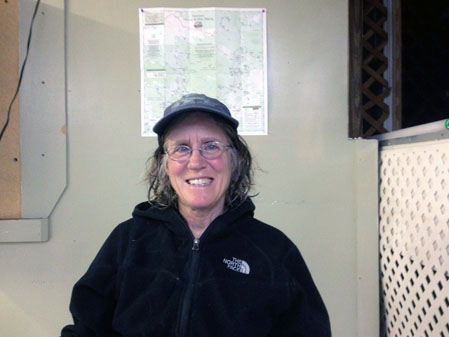
Home > Dispatches > Daily Dispatches 2019 >Daily Dispatch #306
November 5, 2019: Problem Solving 101
I have never considered myself to be adept at problem solving. I’m just not big on conceptualizing. For instance, chess. This is a game that I’d like to play. I like the markers, especially the knights and castles. However, I don’t see patterns, and I definitely can’t strategize. Checkers, same thing. I should be adept at doing crossword puzzles, but words based on phrases don’t come to me. So, given that I have this deficit, my ability to problem solve when educating the horses is pretty remarkable. I only recently began making problem solving breakthroughs. In the past, I’d lead the horses through the obstacles and hope that they understood what I was asking. I knew this was not autonomous training but didn’t see how I might change my ways. |
|
I began doing this – Raudi first responded in a wholehearted fashion, and Tyra and Hrimmi followed suit. Horses, I realized, hate ambiguity. They most like to act on simple, clear cut directives. My success in this realm opened mental doors. I realized last month that the reason why the horses were tripping over the pole when I asked them to back over it was because they weren’t seeing it in its entirety. So I wrapped the ground pole in yellow and blue felt leg wraps, and I had them touch the pole with their nose. Tyra did the best; I don’t recall if I wrapped the pole before having Raudi and Hrimmi go over it. This brings us to this month. The course consists of a circular pattern. There are five obstacles and the horses must first go one way, then on the tarp obstacle, they go back the other way. The course consists of a tarp, a narrow gap, three hula hoops laid side-by-side, two poles, and a three-bucket weave pattern. The handler must stand in a hula hoop in the middle when directing the horses. I erred in the first go-round in that I had the obstacles really close – I thought that this way, that I’d be able to direct the horses via a regular length lead line. I realized this wasn’t going to work. So today I set up the course with considerable space between the obstacles, meaning that the horses would have to travel in a large circle. I then put out targets, yellow bucket lids – they had to touch the lids, which were situated in front of and on the obstacles. All three mares figured out what I was asking very quickly. They even went from target to target, not waiting for a treat. I rewarded them copiously when they did the hardest obstacle of all correctly. This was going through and then backing out of the poles. I was most pleased about the fact that Raudi really seemed to be enjoying herself. Maybe, all along, she has been telling me that she wanted more autonomy. Tomorrow I will continue to problem solve – I’ll have fewer targets and maybe put the horses on a longer lead line. We’ll see. I’ll have to first ask them what they think about my ideas. |
|
